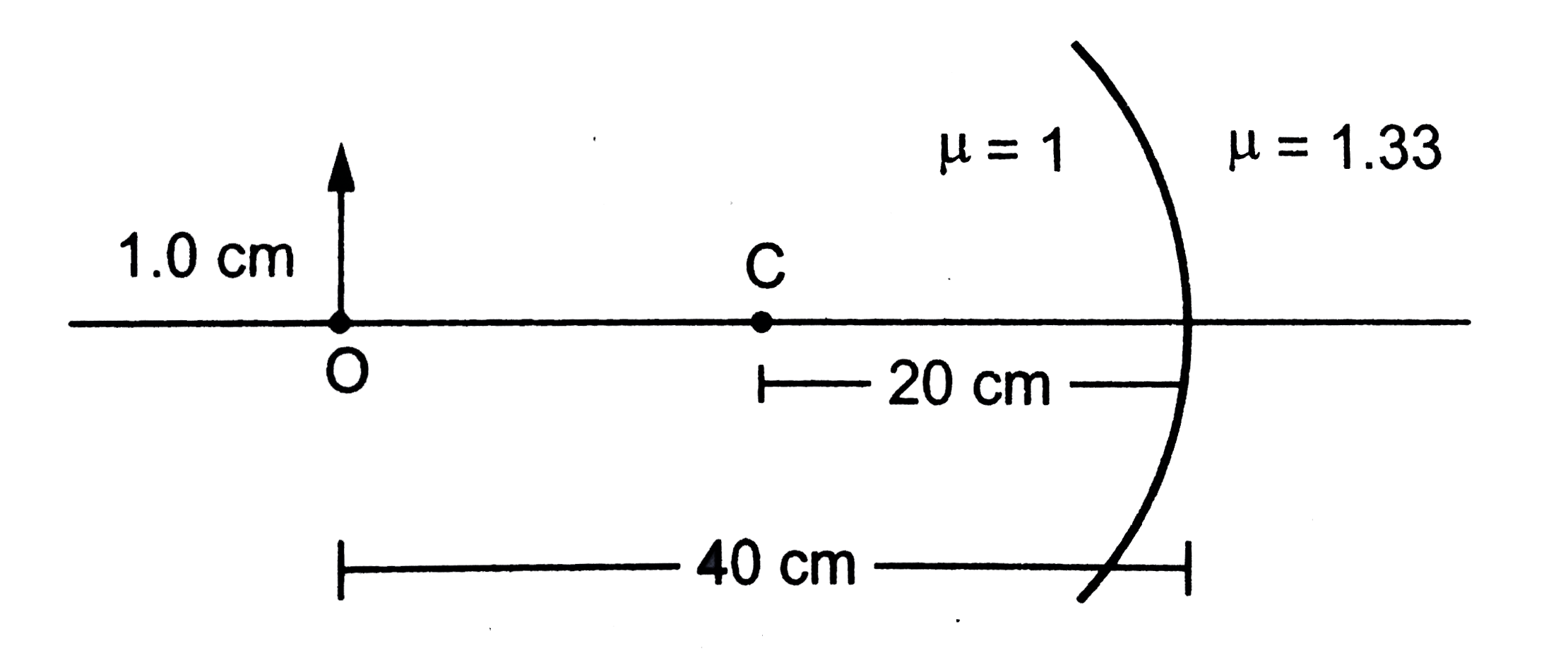Assertion : The size of the mirrorr affect the nature of the image.
Reason : Small mirrorrs always forms a virtual image.
If both assertion and reason are true and reason is the correct explanation of assertion.
If both assertion and reason are true and reason is not the correct explanation of assertion.
If assertion is true but reason is false.
If both assertion and reason are false.
The correct Answer is:D
To solve the given question, we need to analyze both the assertion and the reason provided.
Step 1: Understand the Assertion
The assertion states: "The size of the mirror affects the nature of the image."
- This statement implies that the physical dimensions of the mirror (i.e., whether it is large or small) influence the type of image (real or virtual) that is formed.
Step 2: Analyze the Assertion
- The nature of an image formed by a mirror primarily depends on the mirror's curvature (concave or convex), the focal length, and the distance of the object from the mirror.
- The size of the mirror does not inherently change whether the image is real or virtual. For example, a concave mirror can produce a real image if the object is beyond the focal point, regardless of its size.
Conclusion for Assertion
- Therefore, the assertion is false because the size of the mirror does not affect the nature of the image.
Step 3: Understand the Reason
The reason states: "Small mirrors always form a virtual image."
- This statement suggests that if a mirror is small, it will only produce virtual images.
Step 4: Analyze the Reason
- A small concave mirror can form a real image if the object is placed at a suitable distance (beyond the focal length).
- A small convex mirror will always produce a virtual image, but this is not a characteristic of the size itself; rather, it is a property of the type of mirror.
Conclusion for Reason
- Hence, the reason is also false because small mirrors do not always form virtual images; it depends on the type of mirror and the position of the object.
Final Conclusion
Both the assertion and the reason are false. Therefore, the correct answer is that both statements are incorrect.
---
The assertion states: "The size of the mirror affects the nature of the image."
- This statement implies that the physical dimensions of the mirror (i.e., whether it is large or small) influence the type of image (real or virtual) that is formed.
- The nature of an image formed by a mirror primarily depends on the mirror's curvature (concave or convex), the focal length, and the distance of the object from the mirror.
- The size of the mirror does not inherently change whether the image is real or virtual. For example, a concave mirror can produce a real image if the object is beyond the focal point, regardless of its size.
- Therefore, the assertion is false because the size of the mirror does not affect the nature of the image.
The reason states: "Small mirrors always form a virtual image."
- This statement suggests that if a mirror is small, it will only produce virtual images.
- A small concave mirror can form a real image if the object is placed at a suitable distance (beyond the focal length).
- A small convex mirror will always produce a virtual image, but this is not a characteristic of the size itself; rather, it is a property of the type of mirror.
- Hence, the reason is also false because small mirrors do not always form virtual images; it depends on the type of mirror and the position of the object.
Both the assertion and the reason are false. Therefore, the correct answer is that both statements are incorrect.
Topper's Solved these Questions
- RAY OPTICS AND OPTICAL INSTRUMENTSBook:NCERT FINGERTPS ENGLISHChapter:RAY OPTICS AND OPTICAL INSTRUMENTSExercise:MULTIPLE CHOICE QUESTIONS
Explore 100 Videos
- RAY OPTICS AND OPTICAL INSTRUMENTSBook:NCERT FINGERTPS ENGLISHChapter:RAY OPTICS AND OPTICAL INSTRUMENTSExercise:Reflection Of Light By Spherical Mirrors
Explore 5 Videos
- RAY OPTICS AND OPTICAL INSTRUMENTSBook:NCERT FINGERTPS ENGLISHChapter:RAY OPTICS AND OPTICAL INSTRUMENTSExercise:NCERT EXAMPLAR PROBLEMS
Explore 11 Videos
- PRACTICE PAPPERBook:NCERT FINGERTPS ENGLISHChapter:PRACTICE PAPPERExercise:Practice Paper 3
Explore 50 Videos
- SEMICONDUCTOR ELECTRONICS : MATERIALS , DEVICES AND SIMPLE CIRCUITS Book:NCERT FINGERTPS ENGLISHChapter:SEMICONDUCTOR ELECTRONICS : MATERIALS , DEVICES AND SIMPLE CIRCUITS Exercise:Assertion And Reason
Explore 15 Videos
Similar Questions
What is the nature of the image formed by a convex mirror?
View SolutionA convex mirror always forms virtual and diminished images. _____
View SolutionName the lens that always forms a virtual and erect image.
View SolutionThe light reflected by a plane mirrorr may form a real image
View SolutionThe image by a convex mirror is always formed in front of the mirror.
View SolutionThe image formed in a convex mirror is always erect and enlarged.
View SolutionAssertion : A convex mirror can never make a real image
Reason : For all real objects image formed by a convex mirror is virtual
View SolutionNature of image of a real object formed by convex mirror is always
View SolutionUse the mirror equation to deduct that :
(a) an object between f and 2f of a concave mirror produces a real image beyond 2f.
(b) a convex mirror always produces a virtual image independent of the location of the object.
( c) the virtual image produced by a convex mirror is always diminished in size and is located between the focus and the pole.
(d) an object placed between the pole and focus of a concave mirror produces a virtual and enlarged image.
View SolutionFind the size of the image formed in the situation shown in figure.

View Solution

